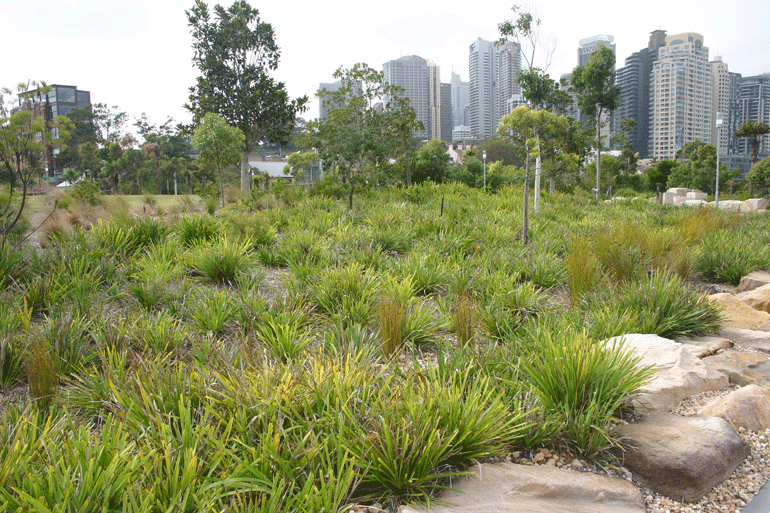About this case study
Drought
Local government
Education
A powerhouse of simplicity and steel, the windmill is an icon of the Australian landscape – and today this ancient technology is helping Nambucca Valley Council to address the contemporary challenge of climate change.
Climate change is impacting our community in many ways – we’ve had bushfires, fish kills and five floods in the last 18 months. We knew we needed to take a holistic view to help our community adapt to a changing climate and more unpredictable, extreme weather events.
Teresa Boorer, Grants and Contributions Officer, Nambucca Valley Council
Dawkins Park, and the lake which sits at its heart, is a central feature of the small town of Macksville on the Nambucca River. But the lake was in poor condition following long periods of dry weather, extreme heat and an over-abundance of White Ibis.
With the help of funding from the NSW’s Government’s Increasing Resilience to Climate Change program and NSW Clubs, Council has improved the lake’s water quality and created learning opportunities that engage young people in the story of climate adaptation.
In 2017, Council commenced a management program to reduce the attraction of Dawkins Park as habitat for the Australian White Ibis. But the intruders had left many problems in their wake, including poor water quality, degraded vegetation and an unpleasant odour.
One part of the solution is Dawkins Park’s windmill, which now pumps water up to 10 litres per second through a ‘raingarden’ that does the job of biofiltration. This reduces the problem of stagnant water, while plants around the pond form a defensive barrier against unwanted nutrients and pollutants that get washed off roads and lawn areas.
The windmill is also a unique learning tool that is increasing community and student stewardship. Nambucca Valley Council partnered with Southern Cross University to develop an ‘outdoor’ classroom and a series of resources, including engaging and easy-to-read signage at learning stations around the park. Students follow a walking trail to learn about the reserve’s water quality and ecology, and the impact of climate change on the local environment. This is complemented with an interactive website which provides interesting insights into local birds and wildlife.
Nambucca Valley Council also forged strong connections with local Aboriginal Elders of the Gumbaynggirr people, and other cultural knowledge holders and educators. Special resources were developed to share Gumbaynggirr knowledge, stories and songlines.

Inquiry-based learning, problem-solving and co-design allows students to identify and predict relationships between changing weather conditions and sustainability scenarios throughout the reserve. Students are then connected to further Council resources at the Macksville library, which adjoins the site.
Despite periods of excessive heat, rainfall and algal growth, the windmill continues to turn – although the process of monitoring and managing is ongoing.
More than 115 species of birds have been spotted at the lake, and waterbirds like the Cattle egret now flock to the park to breed and roost.
Council staff enthusiastically promote the project’s resources to local and regional schools. And Council continues to investigate and address water quality management in the lake to create a balanced environment which supports biodiversity and is a beautiful place for the community to enjoy.
Climate adaptation will require ongoing learning and stewardship. The learning spaces we have created in Dawkins Park will help our community build resilience in a changing climate.
Teresa Boorer, Grants and Contributions Officer, Nambucca Valley Council
This project was proudly funded by the NSW Government with support from Local Government NSW.
Case studies

The role of the Greater Cities Commission (GCC) is to coordinate and align the planning that will shape the future of the Six Cities Region. The GCC are using a tool that applies NARCliM regional climate projections to assess the socioeconomic risks of climate change for the region.

The Living Lab, located in a Lismore main street, is a design and research collaborative conceived following the floods of 2022, which wrought untold havoc on the Northern Rivers region.

When a eucalypt tree can live for hundreds of years, revegetation programs must look far into the future due to Australia’s rapidly changing climate.